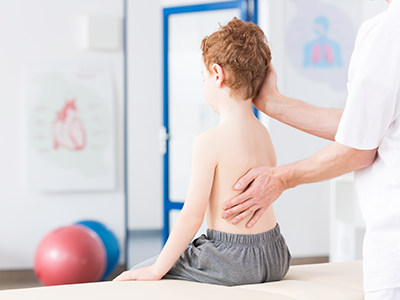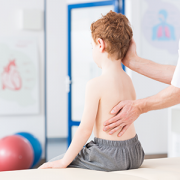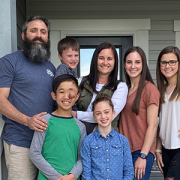Children’s National first-use of anterior vertebral body tethering system for idiopathic scoliosis

On Monday, Feb. 1, 2021, Children’s National Hospital performed the first anterior vertebral body tethering procedure for a child in the Washington, D.C., area. The device is a recently approved option for treating children with idiopathic scoliosis, the most common type of scoliosis. It allows for gradual correction of a spinal deformity through the natural growth of the spine, leading to improvements in spinal alignment while maintaining spinal flexibility.
In August 2019, the U.S. Food and Drug Administration (FDA) approved the first spinal tether system for pediatric patients called The Tether – Vertebral Body Tethering System. This device is attached to the spine during a minimally invasive thorascopic procedure performed by a multidisciplinary medical team, which includes orthopaedic surgery, thoracic surgery and anesthesia.
“This promising technology may help maintain the flexibility of the spine as it grows straighter over time,” says Matthew Oetgen, M.D., chief of Orthopaedics at Children’s National. “Novel devices like The Tether offer additional treatment options for idiopathic scoliosis, which have the potential to improve pediatric surgical outcomes and quality of life for children and adolescents with significant spinal deformities.”
The procedure at Children’s National brought together some the region’s best pediatric orthopaedic and thoracic surgeons, including Dr. Oetgen, Shannon Kelly, M.D., associate chief of Orthopaedic Surgery, and Timothy Kane, M.D., chief of General and Thoracic Surgery.
“Children’s National can offer these types of procedures because the hospital is home to many talented pediatric surgeons across specialties, many of whom are experts in minimally invasive techniques for children,” says Dr. Kane. “We collaborate together, often, because we know that’s the best way to continually improve the care we provide to children and their families.”
Idiopathic scoliosis is the most common type of scoliosis and can occur in children between age 10 and 18 or until they are fully grown. Spinal fusion surgery is the most common treatment for children with the most severe spine curvatures and continues to be the “gold standard” for surgical treatment of this condition. It takes about 3 months for a child or adolescent to fully recover from the procedure. While spinal fusion produces excellent and reproducible outcomes, in certain patients with less severe deformities and significant skeletal growth remaining, vertebral body tethering may offer some benefits over spinal fusion. In clinical trials, the spinal tether was shown to shorten recovery time and increase range of motion. Early diagnosis is vital to dictate which treatment will be most beneficial.










